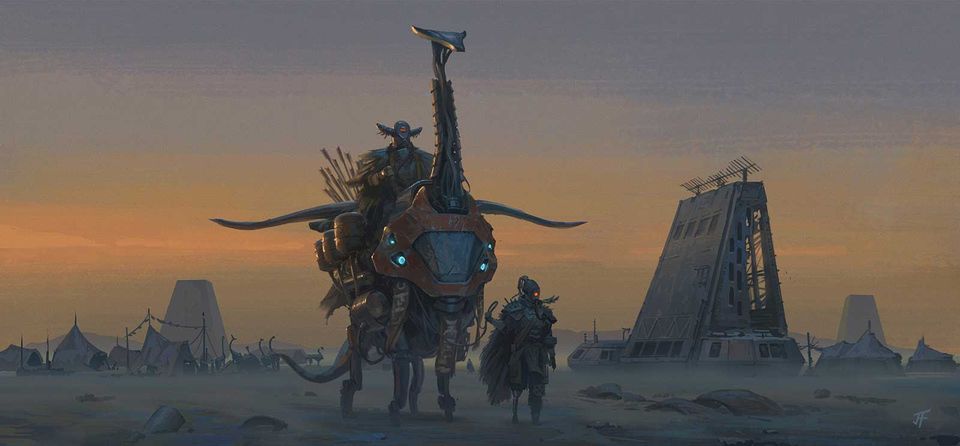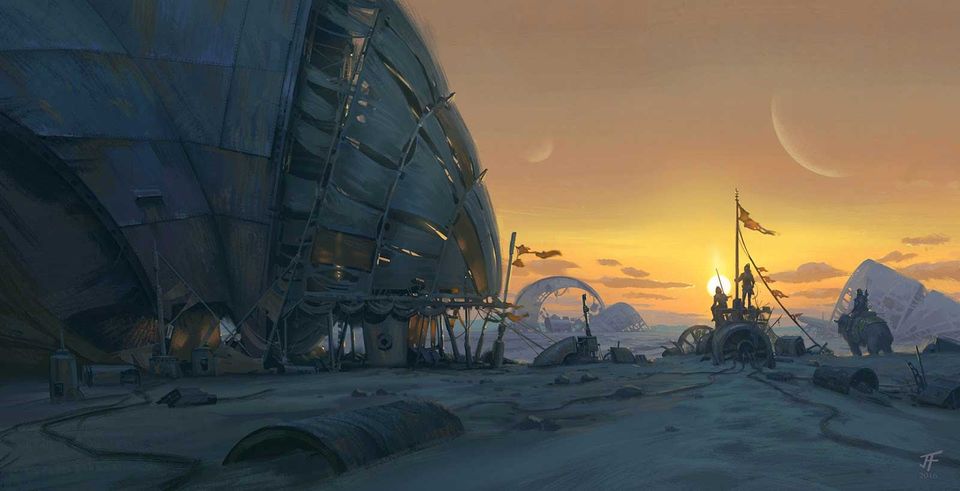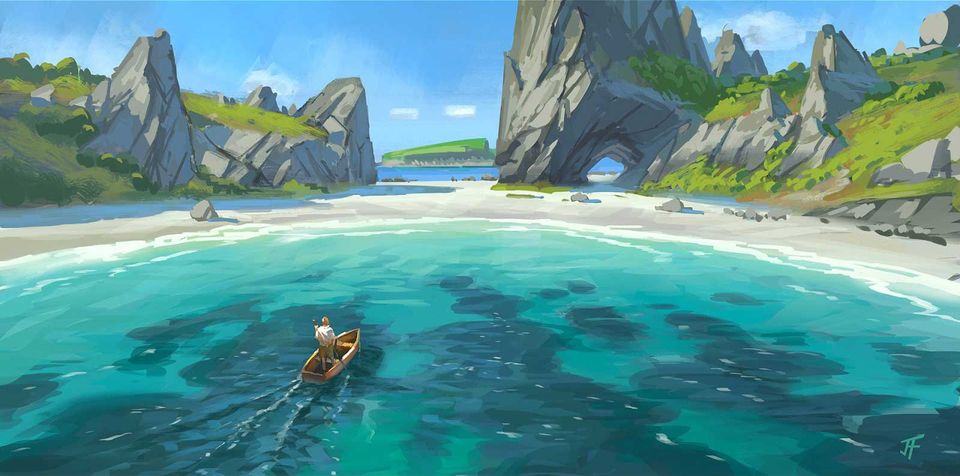Artist Spotlight: Jeremy Fenske
Website Editor • November 17, 2019
Everyone’s work is deeply idiosyncratic: in our regular Spotlight segment we explore artists’ experiences and inspiration to understand what defines and inspires their unique styles.
Can you give us a brief background on yourself?
I'm originally from Cleveland Ohio and for as long as I can remember I've always been drawing, painting, and creating art. In 2009, I graduated from Columbus College of Art and Design as a Fine Arts major. It was during my senior year in college when I started to create my concept art portfolio and landed my first job with Zenimax/Bethesda a month after graduation. There I worked on the 'Elder Scrolls Online' for 6 years throughout its production. In 2015, I left Zenimax to go work with High Moon Studios in San Diego on 'Destiny' and that is where I am today.

What kind of influence does your location have on your career?
As a professional working in the gaming industry a lot of industry gatherings and studios are located in Southern California. Being closer to these events and studios brings me closer to my industry, and keeps me involved in it, while also opening up new opportunities that distance has kept me from. But, with the way the internet has changed things it is less important to live in the bigger cities to gain clients and work. Now you don't have to leave home to make people aware of who you are.
What is your greatest source of inspiration?
For me the real world is far more inspirational than anything else. There is nothing more beautiful, more strange, and more well designed than what occurs in nature. Every great visual design, original creature, and invented world ever created was in some way inspired by our own world.
Could you pick one piece of art that has made a lasting influence on you, and if so why?
There is a piece by Peder Mønsted called "Sleigh ride on a sunny winter day" that has been a great source of inspiration. Nothing sentimental, but rather an embodiment of what it means to be a great landscape painter. The understanding of how light reflects off the snow and trees shows a perfect balance of how physical light behaves and can convey an emotional image.
What skills or techniques do you find most useful in your line of work? Do you use primarily traditional or digital methods to create your artwork?
For me the most important skills to understand are the basic fundamentals such as; light, color, design, composition, anatomy, etc. As a concept artist it is important to be able to make an image that shows what the final product should look like and help sell interesting new ideas in a fully realized manner. I need to be able to make something imaginary look and feel real to people who don't understand the process or to inspire a development team to make something amazing. I mainly use digital media for creating work especially for my day job. At home I use both digital and traditional, I enjoy working with oil, gouache, and watercolor for painting plain air outside. Digital media cannot replace the feeling of a brush on canvas and its a feeling I need to have from time to time.
How can people who are interested in discovering more of your work find it?
I'm on all the social medias!
Blog: jairworks.blogspot.com
instagram, twitter and tumblr
email: jeremyfenskeart@gmail.com
Scriba is a revolutionary digital stylus that is ergonomically designed to comfortably fit your hand and uses unique Squeeze-Motion technology.
Order here.
Articles

The United Nations has described the disruption to education caused by the pandemic as ‘unparalleled’. At the virus’ worldwide peak in April, it is estimated that over 90% of all enrolled learners, from kindergarten to bachelors and beyond, had their education affected by school closures and the pandemic (UNESCO). For many university students and older children, they have had to adapt quickly to online learning. They can keep in touch with their peers and teachers online and continue their studies, albeit in a highly modified way. As challenging as this may be, this experience will help equip them for a future that is increasingly online. For parents of younger children, they are assuming a new role: their child’s home school teacher. This is in addition to their usual childcare and household duties, their work responsibilities and often emotional and financial worries caused by the pandemic. Stressful? Yes. The good, and somewhat surprising, news? The experts advise that you don’t teach your children - at least not in the way you might expect.

If the recent outbreak of Covid-19 has taught us anything, it's that many adults do not wash their hands effectively. It has never been more important that we support our children to develop good personal hygiene to keep themselves and our families safe. This seemingly easy task can be very difficult for children with fine motor skill difficulties. In this article, we explore some ideas to support your child with hand washing.

Lockdown has brought the digital future into the now. Online shopping, entertainment, education and more have moved from the periphery to the mainstream to, in many cases, the only option. With the necessity of social distancing looking to continue for many months, it appears that this rapid digital revolution is here to stay. This means that life as we know it, in most of its sectors, has changed forever. In order to survive, businesses are having to adapt rapidly, embrace technology and look to the future. Architecture is no exception. There has been a widespread adoption of technology and VR over the past few months in response to the lockdown across all of society. Elderly grandparents who were once resistant to adopt new technologies talk of “Zooming” and have started video chatting with their family members to combat loneliness. Art galleries that were once considered stuffy or pretentious are now pioneers in VR technology, with Google Art & Culture offering tours of London’s National Gallery or the Musee D’Orsay in Paris. These virtual tours deliver art in a dynamic new way that can be far more engaging than regular photos. Critics have applauded the panoramic and immersive views of gallery building and exhibitions which work well for rendering of 2 dimensional art, however impressions of sculpture is somewhat lacklustre. With VR technology, users can enjoy a truly immersive experience in the comforts, and safety, of their own home. The COVID-19 pandemic has served as an accelerant for the arts and entertainment industries to embrace VR.






